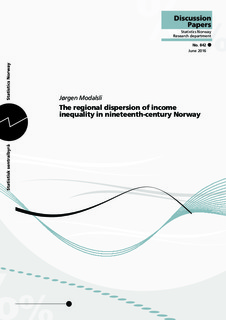| dc.description.abstract | This paper documents, for the first time, municipality- and occupation-level estimates of income inequality between individuals in a European country in the nineteenth century, using a combination of several detailed data sets for Norway in the late 1860s.
Urban incomes were on average 4.5 times higher than rural incomes, and the average city Gini coefficient was twice the average rural municipality Gini. All high- or medium-income occupation groups exhibited substantial within-occupation income inequality. Across municipalities, income inequality is positively associated with manufacturing, average crop, and historical land inequality, and is negatively associated with distance to the nearest city, pastoral agriculture, and fisheries. The income Gini for Norway as a whole is found to have been 0.546, slightly higher than estimates for the UK and US in the same period. | nb_NO |
